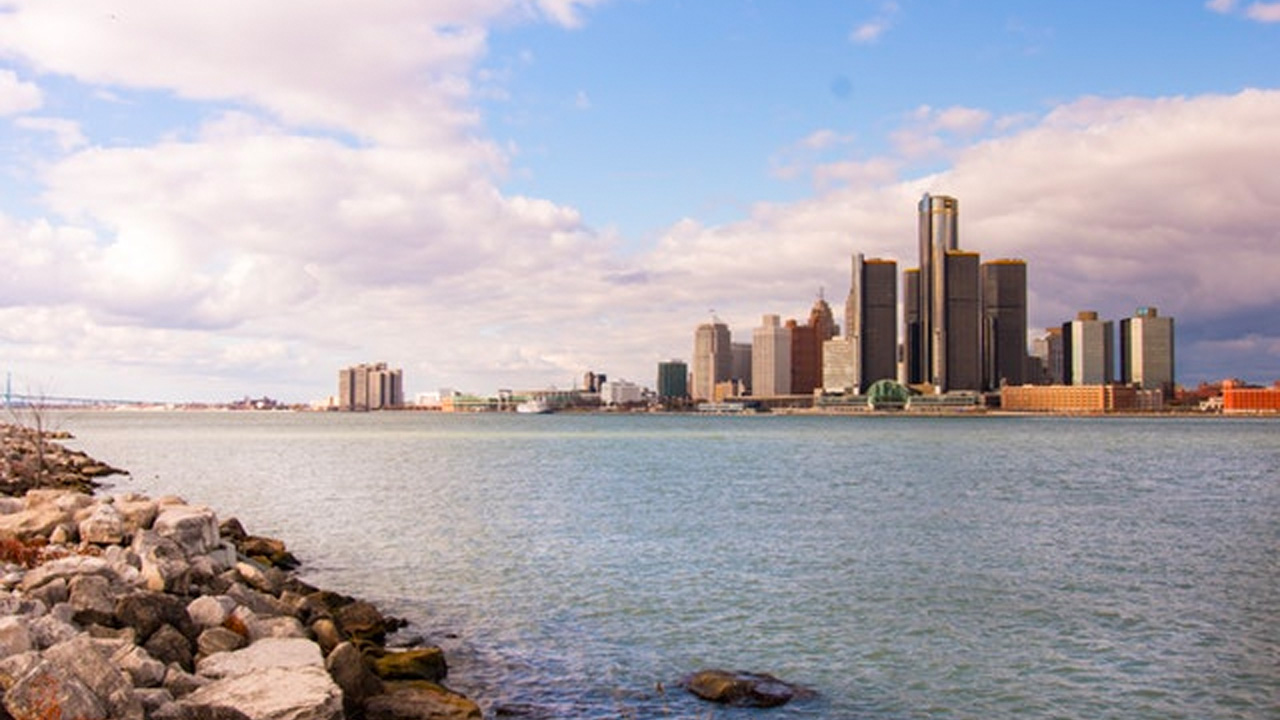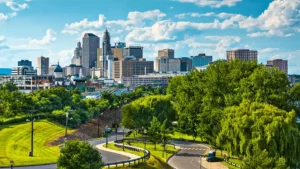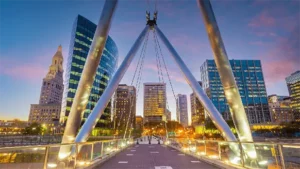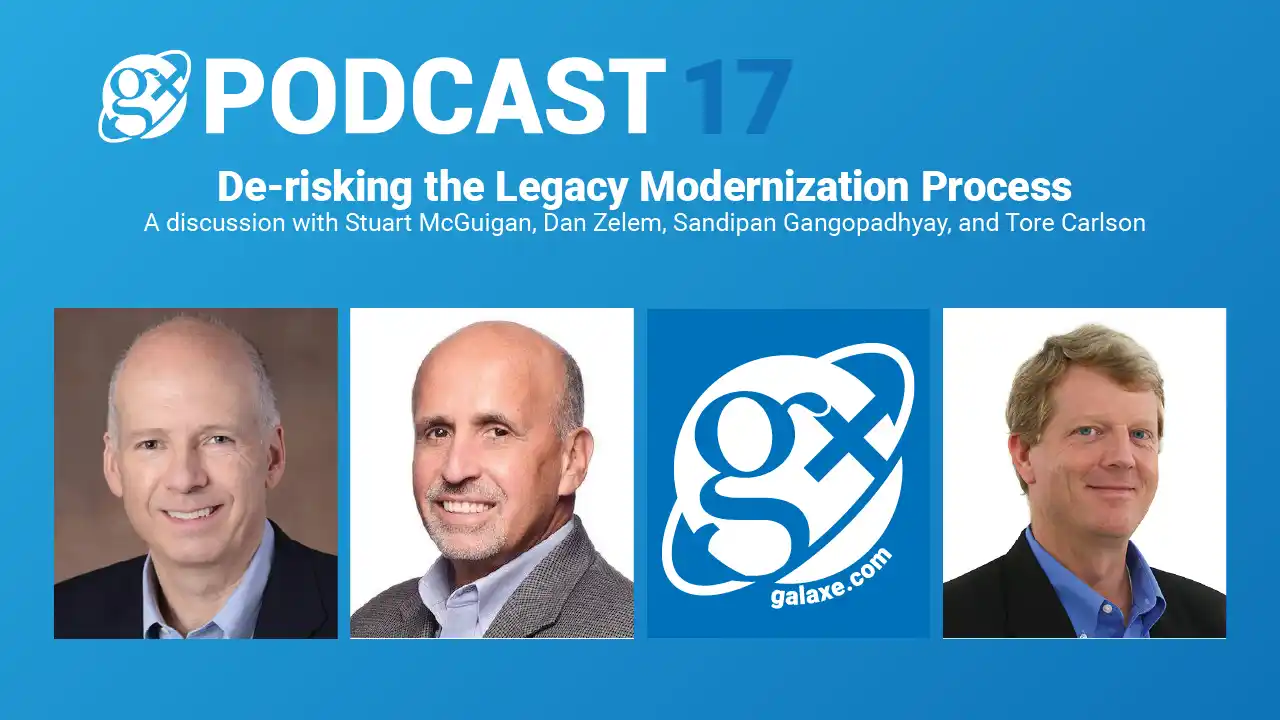Betty Corley is happy where she is. Corley and her sister Claudette own a tidy two-story house with a well-tended garden on Dubois Street on Detroit’s east side, where they’ve lived their entire lives. Betty has an easy five-minute drive to her job at a mental-health center on Woodward Avenue. “Nobody ever bothers us,” she says, “and we don’t bother anybody.”
Certainly not the neighbors — because on Betty Corley’s block, there aren’t any. Whereas 26 houses once stood on this stretch of Dubois Street, today only Corley’s remains. The rest have been burned or bulldozed into oblivion. Corley pays a local man $80 a month to mow six empty lots on either side of her house, but that’s one of the few signs of a human presence in this part of town. Other lots have a more natural look, their tall grasses and scattered bushes providing a habitat for pheasant, rabbits and raccoons. There is almost no traffic — a good thing, as many of the stoplights on the cross streets aren’t working — and an eerie quiet seeps through the neighborhood.
Police response to 911 calls can charitably be called languid. But if city officials ask Corley to relocate, as political winds blowing through Detroit indicate they soon might, she’s not budging. If this desperately poor city is no longer able to provide services to the neighborhood — trash pickup, fire protection — “we’ll just have to deal with it,” she says.
Just as she had to deal with the discovery of a man’s burned torso in the underbrush across the street a few months ago. Betty Corley says she won’t move away, but other isolated homeowners don’t share her loyalty. Cynthia Ciesiolka, who lives on the next block with her four grandchildren, says if the city offered her $5 and a place to live, she’d be gone tomorrow.
That wind of change that’s gathering force in Detroit emanates from the offices of Mayor Dave Bing, who knows that dwindling tax revenues (and bloated pension obligations) have devastated the city’s capacity to provide services to all those lonely blocks. It comes from other Michigan politicians and philanthropists who recognize that a city that has lost half its population in the past half-century — and has seen its signature industry be downsized just as severely — cannot cling any longer to a nostalgic vision that Wayne State University law professor John Mogk calls “fantasy thinking.” And it comes from the suburban headquarters of the Kresge Foundation, which is providing the money for a massive planning effort for Detroit’s future that Kresge president and CEO Rip Rapson calls “more complex and more difficult than anything any city in America has ever done. If Detroit continues on a straight-line path, it goes over the cliff. We don’t have enough time to do course correction.”
Now Detroit has to change in ways that contradict the expansive vision it was built on. In a word, Detroit has to shrink. It needs to become smaller, greener, thriftier. (Detroit recently learned this lesson about cars as well.) The city has to abandon those overgrown parts of itself that are hopelessly blighted and refocus its resources on those parts that can be saved. And it has to do it in the face of resistance both political and personal. Whether Detroit can pull this off will determine whether it survives. The door is closing on the city — and on Betty Corley. What has to be done is a challenge to the nature of the contract between government and its citizens. The taking of land to build a highway is one thing, but what about effectively abandoning neighborhoods by suspending services? A war could be fought over such ideas. And in Detroit, one is brewing.
Detroit’s crisis is unique only in its scale. Many other aging cities of the Northeast and Midwest — Cleveland; Hartford, Conn.; and Buffalo, N.Y., to name a few — are similarly suspended between confusing polarities: the self-image of their former greatness, and the reality of their current predicament; the future obligations established during times of plenty, and the lack of revenue to fund them during a time of scarcity; loyalty to the democratic principle of self-determination, and the desperate need for truly radical action. So how do you remake a crippled city and perhaps see it prosper? How do you put your arms around an area checkered with desolation, blight, struggling neighborhoods and scattered pockets of relative vitality? Maybe you begin by defining the characteristics of city life that for centuries have made it an appealing way of living — and then adopt strategies to bring them to life. Here’s what TIME has found to be the best ideas put forward in the hundreds of interviews our writers and editors have conducted over the course of our yearlong project, Assignment Detroit:
Density Is Destiny
A thick, populated urban texture of people connecting with one another on a daily basis is the very quality that defines urban life. Its absence is the essence of Detroit’s predicament. At 139 sq. mi., with a population of roughly 800,000 — about 40% of its postwar peak — the city is simply too damn big. Forty years ago, the greatest distance a Detroit Police Department cruiser had to cover to get from its precinct station to a crime scene was less than three miles; today, there are homes in the city more than 7.5 miles from the nearest station. In 1970 the department employed 5,000 officers; now fewer than 3,000 have to cover just as much territory, even as crime rates have climbed. One particular Detroit fire company has to travel four miles from its quarters to reach the farthest point in its first-alarm district. Extend similar math to every other municipal service — trash collection, road maintenance, street lighting — and you are left with a bundle of equations that will not balance.
Detroit has to employ a form of triage that could imperil the political future of even the boldest elected officials: a choice to abandon failed neighborhoods so still-functioning neighborhoods can thrive. The potential of just that kind of strategy has already been demonstrated on the city’s southwest side in Mexicantown, a working-class neighborhood with a vibrant, pedestrian-friendly retail district, hardly any abandoned homes and a recent history of well-deployed government grants secured by local politicians and then productively exploited by local businesspeople
Connecting the Clusters
Nothing starves a neighborhood like isolation. In Detroit, vital neighborhoods are not contiguous; they’re scattered across the map like meaty morsels in a pale, thin broth. Conveniently, though, the city’s main thoroughfares — a series of eight- and 10-lane radial avenues emanating from downtown, originally laid out two centuries ago — are a virtual stencil for a transportation system that could link scattered communities into a coherent whole.
The first element in such a system, the M1 light-rail line, is on the brink of construction, its initial phase financed by private and not-for-profit institutions that recognize the seemingly counterintuitive notion that a rail line down the city’s main drag, Woodward Avenue, might get foot traffic flowing again. In the past, Detroit’s efforts at rebirth took the form of helter-skelter interventions created independently of any thought-out conception of the city’s future. The most baleful example of this sort of inverted planning was the Renaissance Center, which arose like a disco-era fortress on the shore of the Detroit River in 1977 and proved uninviting to any other business development.
The M1 line is pure infrastructure development; it’s designed, says Matt Cullen, the volunteer CEO of the project, to be “the spine of the shrunken city.” But it will also bring with it street and sidewalk redesign, improved lighting, enhanced landscaping and other pedestrian-scale amenities conceived to return retail businesses — and density — to the heart of town. Proof of concept: just three weeks ago, a consortium of banks and foundations announced plans to commit more than $20 million to mixed-income housing and other projects in the Midtown area, which straddles the M1 route near such institutions as Wayne State University and the Detroit Medical Center.
The Gift of Nature
The random carpet of vacant lots in Detroit and other declining cities, the urban prairie, can be assembled into something far more authentic and useful. Noted landscape and urban designer Diana Balmori believes cities can “transform abandonment into an asset” by allowing forsaken neighborhoods to revert to their natural state. While urban farming has a limited scale, the restored prairie is a low-maintenance expression of the natural world. Not only do such greenbelts provide aesthetic and educational benefits, but also, properties facing them become more valuable. Toni Griffin, the city planner heading the Kresge-funded effort on Detroit’s behalf, wants to uncover the streams and creeks that once rippled through the city but were long ago shunted into underground conduits. Griffin knows the virtues of waterways: she was the key figure in the stunningly successful revitalization of the once dilapidated Anacostia River waterfront in Washington.
Homes for People, People for Homes
“Ruin porn” photography, often showing abandoned, violated houses, threatens to define cities like Buffalo, Cleveland and Detroit, but what you rarely see in the media is the surviving stock. Even after decades of abandonment and decay, Detroit’s housing is one of the city’s greatest assets. Handsome, well-preserved homes in viable neighborhoods like the University District, Rosedale Park and the Villages, near the east-side riverfront, are among the greatest housing bargains in America: you can buy a four-bedroom Tudor in move-in condition for less than $100,000. But on a far larger scale, the modest bungalows and red bricks and half capes that have long housed most Detroiters comprise a compelling incentive to pull people like Betty Corley out of neighborhoods marked for abandonment. Instead of auctioning off tax-foreclosed properties for relative pennies, the city could save unoccupied houses in viable neighborhoods with an urban homesteading program, giving the homes to displaced residents, free of charge and exempt from property taxes for five years, so long as they remain owner-occupied and well-maintained.
A More Dynamic Diversity
When America’s Rust Belt cities empty out, the exodus creates concentrations of poor blacks without the means to turn back the tide. Yet there’s a collateral result of Detroit’s shrinking population and dirt-cheap housing: the city has started to become less monochromatic. Detroit’s non-Hispanic white population has increased from 8.4% to 13.3% in just the past year, the obvious consequence of both the incoming migration of young whites and the concurrent flight to the suburbs of middle-class blacks unwilling to turn their kids over to a broken school system.
It may be wishful to think so, but in a city where race is the insidious sword that slices its way into every conversation, this reversal of migration patterns could turn out to be a uniting development — if Detroit gets lucky, and if people of goodwill recognize their mutual dependency. The increasing African-American presence in the wealthier suburbs heightens suburban concern for the city’s problems. At the same time, a growing presence of more-affluent whites in the city enhances both the tax base and the perception of progress. “I hate to admit it,” native Detroiter Greg Thrasher recently commented on TIME.com’s Detroit blog, “but I am fully aware that the presence of white folks in America increases the quality of life, liberty and the pursuit of happiness for nonwhites.” He concluded, “It is a reality I have confronted all my life as a Black activist, yet I do hope the return flight is full.”
A growing gay population in metro Detroit, attracted to downtown’s nightlife and midtown’s cultural attractions, suggests a softening of age-old prejudices. So does the success of the city’s Arab residents; a Muslim woman of Palestinian descent, Rashida Tlaib, now represents Mexicantown — a district that is half Latino and about a quarter African-American, with additional complements of Romanians, Hungarians and other émigrés from Eastern Europe — in the state legislature. For U.S. cities, says Steve Tobocman, one of Tlaib’s predecessors, “immigrants are new customers.” In Detroit, newcomers are proving the theory that immigrants are almost twice as likely as nativeborn Americans to start new businesses.
But gays, young whites and recent immigrants can’t stabilize the city merely by their presence; only a decent school system will make life in Detroit acceptable for families of any color. In the years since Hurricane Katrina devastated New Orleans, that city has become a laboratory for educational innovation. Their own devastated school system already in receivership, many Detroiters recognize that rethinking the rules — union rules, political rules, pedagogic rules — just might create a climate for improvement.
Economic Sunrise
Every infrastructure program, like the M1 light-rail line, is also a jobs program. Every piece of ensuing development, like the midtown project, creates yet more employment. And every new business, every new resident, every new building or rehabbed factory adds to the tax base. When things start looking up, possibility itself can be a fuel for economic growth.
But there’s virtue in hitting bottom too. For when land, facilities and labor are cheap, money will follow — if politicians allow it to. Already burdened by pension obligations that have been soaring at nearly the rate that revenues have been disappearing, Mayor Bing recognizes that he can’t decree jobs into being. “It’s not the city’s responsibility to create jobs,” he says, “but to create an environment for jobs.” It might be working. Judging by the experience of Dan Gilbert, the chairman of mortgage giant Quicken Loans, who recently moved nearly 1,700 employees from suburban Livonia into the very heart of downtown Detroit, the politically clogged (and at times racially volatile) approval processes that have long plagued the city have eased substantially.
Now Gilbert is thinking of buying some adjacent downtown buildings, both as investment and to house the start-up companies he’s nurturing through his business incubator, Bizdom U. One of the requisites of getting the benefits of Bizdom U (training, consultative help and start-up capital) is that you have to base your business in Detroit. A native son, Gilbert is a passionate evangelist for his hometown. Fellow proselytizer Tim Bryan, on the other hand, lives in New York, and his firm, GalaxE.Solutions Inc., which makes custom software for the health industry, is based in New Jersey. But last May he opened an office in Detroit, initially staffing it with 55 new employees. Now he’s in the process of hiring 125 more.
Why Detroit? “Three simple reasons,” Bryan says. “Underemployment in the local IT industry, low-cost office space and government alignment” with business goals.
Where the Battle Lines Form
Barely a mile from Betty Corley’s lonely house on Dubois Street, on a typical autumn weekend morning, the stalls and booths of Detroit’s Eastern Market are a gastronomic wonder — and a social one as well. Nearly 40,000 people from throughout the metropolitan area flock to the market for the best produce from the Midwestern countryside, and also for the very urban experience of being part of a multifarious, multigenerational and multicolored crowd. The Eastern Market vibe is evident, too, on those summer nights when the Tigers game at Comerica Park ends at around the same time as the soul act across the street at the Fox Theatre and the last notes of La Bohème die out around the corner at the Detroit Opera House. As the three crowds swirl together on the rim of Grand Circus Park, you’d think you’re in a version of the ideal 21st century city.
It’s obviously unclear whether this Detroit can again be joined to the desolate, exhausted Detroit of so many of its neighborhoods. There are all sorts of reasons longtime Detroiters are suspicious of government planning: the network of freeways that permanently scarred the city in the 1950s and ’60s (and simultaneously sucked the life out of it) were another era’s idea of urban redevelopment, as were the spirit-deadening public-housing projects that replaced paved-over neighborhoods. In the spring, a prominent local minister declared that the mayor’s shrinkage plan amounted to “ethnic cleansing” — an odd (and offensive) charge to throw at an effort proposed by an African-American mayor, his largely African-American planning officials and the African-American consultant who is the project’s point person. At one of the community forums where planner Toni Griffin and her city colleagues attempted to explain the planning process, members of a group calling itself By Any Means Necessary vowed to oppose not a specific plan, or a specific sort of plan, but whatever plan emerged. Some city officials, citing Griffin’s out-of-town provenance — rarely a positive attribute in Detroit — wish to diminish her influence. (“If they marginalize her,” says the Kresge Foundation’s Rapson with a stern finality, “they’re on their own.”) And it’s reasonable to question whether Bing, the former basketball player and steel-company executive who ran for mayor as a nonpolitician, has the political skills to do what’s necessary. Will he, for instance, be able to tell individuals and community groups who have labored hard to save their neighborhoods that their efforts have failed and the city is walking away from them? Early on, Bing said he was interested in only a single full term, which would presumably free him to act without fear of reprisal at the ballot box. Now some of the philanthropic foundations, understandably desiring continuity, want him to stick around. Paradoxically, this might require him to pay greater heed to political power brokers disinclined to support something that comes from any agency not under their direct control.
But the essential challenge for everyone involved in the effort to reinvent this storied and suffering city, says Bing aide Marja Winters, is, “How do you get people to think optimistically again?” The likely answer might be found in one of her office’s promotional handouts. It’s a statement attributed to Heaster Wheeler, a former city firefighter who is now executive director of the Detroit branch of the NAACP.
“The best way to predict the future,” Wheeler says, “is to create it.”








